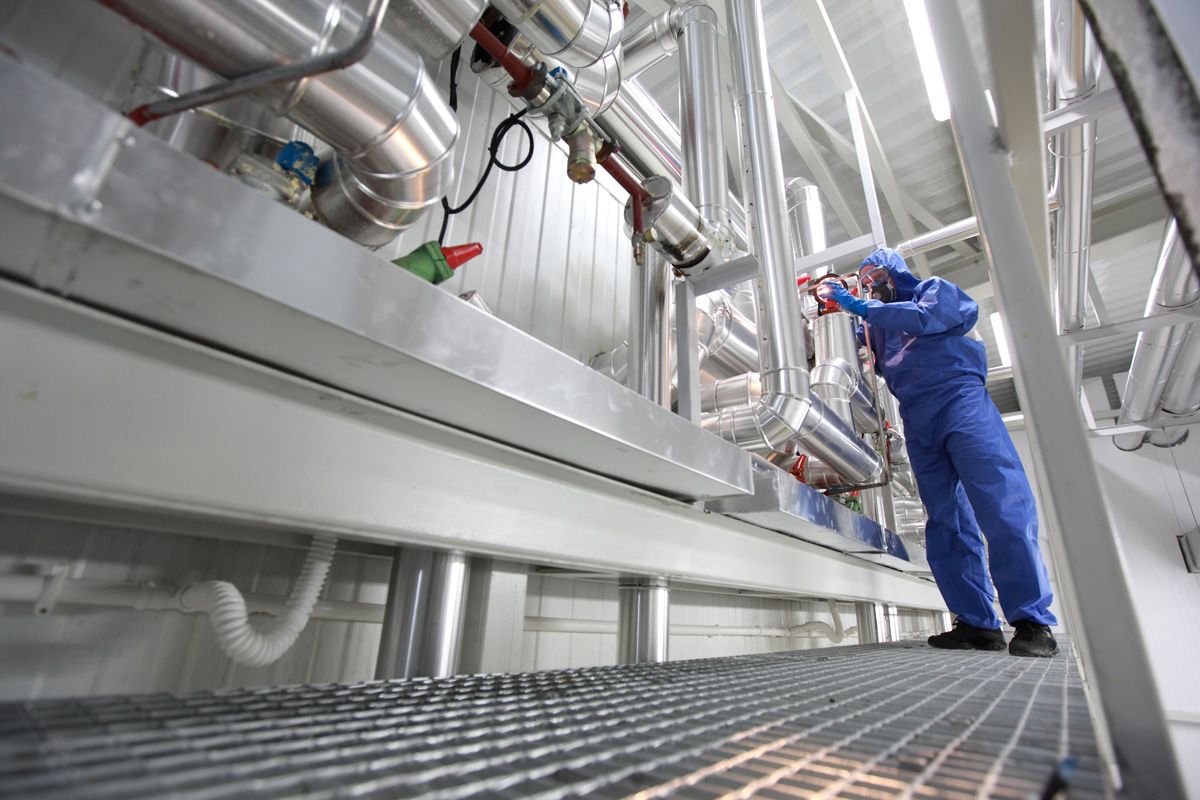-
CAS7664-41-7
-
Structural formula
NH₃
Remove ammonia from the exhaust air
What is ammonia?
Ammonia is a colourless gas with a pungent odour. It is widely used in the chemical industry and plays a central role in the production of fertilisers and chemicals. In nature, ammonia is produced by the decomposition of organic substances.
Origin
Ammonia is mainly produced in the chemical industry, particularly in the manufacture of fertilisers and in the petrochemical industry. It is also produced in agriculture through animal husbandry and the decomposition of organic material. Other sources are wastewater treatment plants and the combustion of fossil fuels.
Recognition
Ammonia can be recognised by its sharp, pungent odour. At low concentrations, the odour is reminiscent of vinegar; at higher concentrations, it is perceived as acrid. The liquid is colourless and can cause skin and eye irritation. When inhaled, it causes respiratory tract irritation, coughing and, in high doses, breathing difficulties.
Limit values
In Germany, the limit values for ammonia are regulated by the Technical Instructions on Air Quality Control (TA-Luft) and the occupational exposure limit values (OEL). The OEL for ammonia is 20 ppm (parts per million) or 14 mg/m³. These limit values are intended to ensure that the concentrations in the workplace do not cause any damage to health.
Dangers
Health: Ammonia can cause severe irritation to the eyes, respiratory tract and skin. At high concentrations, there is a risk of respiratory problems and lung damage. Chronic exposure can lead to permanent damage to health. Environment: Ammonia can contribute to the eutrophication of water bodies, which promotes the growth of algae and disturbs the ecological balance. It is also harmful to aquatic organisms. Economic damage: Improper handling of ammonia can lead to high costs for safety and remediation measures, especially in agriculture and industry.
The oxytec Purification Technology
For many organic pollutants, we offer energy-saving and clean technologies for neutralisation, which we combine in multi-stage plants. In order to achieve a reduction below the limit values, not only the dimensioning of the respective purification stage but also the sequence of the technologies is decisive, as they have different physical effects on the molecules. Below we present some of our purification modules.
CWA
Alternative technologies
Other technologies such as conventional activated carbon filters and simple ventilation systems often have disadvantages such as high energy consumption, limited cleaning performance, large space requirements, long lead times and high investment costs.
Advantages of the oxytec solution
- Compact design: Small footprint compared to traditional systems.
- Fast amortisation: Thanks to low operating costs and high efficiency.
- Environmentally friendly: Minimised environmental impact thanks to innovative technologies
- Efficient ammonia reduction: High purification levels with minimal energy consumption.
